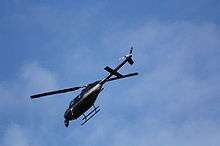RaceCam


RaceCam is a video camera system used primarily in motor racing, which uses a network of car-mounted cameras, microwave radio transmitters, and relays from helicopters to send live images from inside a race car to both pit crews and television audiences.
The technology was first developed in the late 1970s by ATN-7 (now the Seven Network) in Australia, who introduced it for the 1979 Hardie-Ferodo 1000 endurance race at Mount Panorama in Bathurst, New South Wales with Sydney-based driver Peter Williamson able to give commentary from his Toyota Celica.[1]
RaceCam in Australia was unique in that the drivers were often wired for sound and able to converse with the television commentary team during races with top touring car drivers such as Dick Johnson, Allan Grice, Peter Brock and later Glenn Seton, Jim Richards, Mark Skaife, Wayne Gardner and Channel 7's own commentator turned racer Neil Crompton all becoming regular users of the system. RaceCam (with drivers doing their own commentary) became a staple of Seven's Australian Touring Car Championship and Bathurst 1000 broadcasts during the 1980s and 1990s.[2]

American audiences were first introduced to RaceCam at NASCAR's 1979 Daytona 500 on CBS network with Benny Parsons' Chevrolet Monte Carlo, and later at the 1983 Indianapolis 500, when ABC acquired the rights to use a streamlined version of the technology for their coverage of the race. The first Indy winning car with a RaceCam was that of Rick Mears in 1991.
Over the years, the camera location varied from "over-the-shoulder" in 1983, to rear-mounted (looking backwards) in 1988, nosecone-mounted in 1994, and rollbar/above-mounted in 1997. Other camera views have included the rear wing (just above the rear tyre), the gearbox, the driver's helmet, a "footcam" looking at the driver's feet (to illustrate the "heel-and-toe" process in road racing), and a view from the sidepod. The "CrewCam" was another view, mounted on a pit crew member's hat or helmet, showing first-hand, the view of a pit crew member performing his duties on pit road.
In the same time-frame, CBS and ESPN began using on-board cameras during NASCAR telecasts from different developers. The large, boxy interior of the NASCAR stock cars allowed modified, nearly regular-sized video cameras to be mounted in the cockpit. CBS used a remote controlled, 360° rotating camera, and 1984 Daytona 500 winner Cale Yarborough carried one to victory.
While Racecam units had become common place in NASCAR, unlike in Australian touring car racing the drivers generally refused to be wired to talk to the television commentators while driving, saying that it was too distracting. In a NASCAR first, at the 1988 Goodyear NASCAR 500 held at the Calder Park Thunderdome in Melbourne, Australia (which was also the first NASCAR race held outside of North America), Australian drivers Dick Johnson and Allan Grice talked to the Channel 7 commentators during the race. Johnson, who had been using Racecam since 1982, also created a first for American NASCAR viewers when he was able to talk to the ESPN commentators during the 1989 Banquet Frozen Foods 300 at Sears Point Raceway. When Johnson's car went off on oil during the race, he was famously caught dropping the F-bomb just before riding up a bank.[3]
Over the years, RaceCam has been refined and led to further developments. Besides the natural upgrades for high definition television, the "Bumpercam" uses a camera mounted on the car's bumper. The "Roofcam" is a camera mounted on a car's roof, which gives a broader view, and a more authentic perspective of the driver's sightlines. Both systems are popular with NASCAR viewers. "Clearview" is another system, which removes grit and dust from the lens.
Formula One has also incorporates similar technology, with each car featuring a distinctive streamlined "camera pod" mounted above each car's airbox, giving video from a perspective similar to the driver's point of view, while also allowing a rearward-facing view for cars trailing behind. FIA regulations mandate that a total of five cameras (or dummy camera housings) must be mounted on the car, in a choice of several predetermined positions.[4]
In IndyCar, all cars in the field are equipped with three "camera pod" housing units - one each above the roll bar, on the rear wing, and inside one of the rear-view mirrors - regardless if they actually carrying cameras in those locations. This rule is such that cars carrying cameras will not have an aerodynamic disadvantage (or advantage) compared to cars not carrying cameras. In addition, camera-less cars carry equivalent ballast in place of the cameras, to ensure all cars have equal weight characteristics.
References
- ↑ "IP Australia". ipaustralia.gov.au. Retrieved 2011-03-27.
- ↑ Peter Brock describes a lap of Bathurst 1986
- ↑ 1989 Banquet 300 - Dick Johnson Crash
- ↑ "FIA Homepage - FIA Formula One Regulations". Fia.com. Retrieved 2011-03-27.